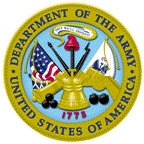United States Department of Defense
Document Type
Article
Date of this Version
2013
Citation
Journal of Safety Research 44 (2013) 45–49; http://dx.doi.org/10.1016/j.jsr.2012.10.013
Abstract
Introduction: The purpose of this research is to describe the leading circumstances of military vehicle crashes to guide prioritization and implementation of crash avoidance and/or warning technologies. Methods: A descriptive study using narrative text analysis on 3,944 military vehicle crash narratives. Crash data on drivers, from 2001 to 2006, were assembled from the U.S. Army Combat Readiness/Safety Center. Reviewers collected information on the circumstances of crashes and determined if vehicle technology could have prevented the crash. Results: Nearly 98% of the crashes were nonfatal; 63% occurred in the U.S. and 24% in Iraq. Among crash events where the direction of the impact was recorded, 32% were to the front of the vehicle and 16% involved a vehicle being rear-ended. Rollovers were mentioned in 20% of the narratives. Technology was determined to have the potential to prevent 26% of the crashes, with the forward collision warning system, rear end collision avoidance, emergency brake assistance, and rollover stability control system likely to have the greatest impacts. Conclusions: Some technologies available for civilian vehicles may prevent certain military crash circumstances. Impact on Industry: The results of this research are significant in light of ongoing global military operations that rely on military vehicles. Improving the preventive technology featured onmilitary vehiclesmay be an effective strategy to reduce the occurrence of military crashes.


